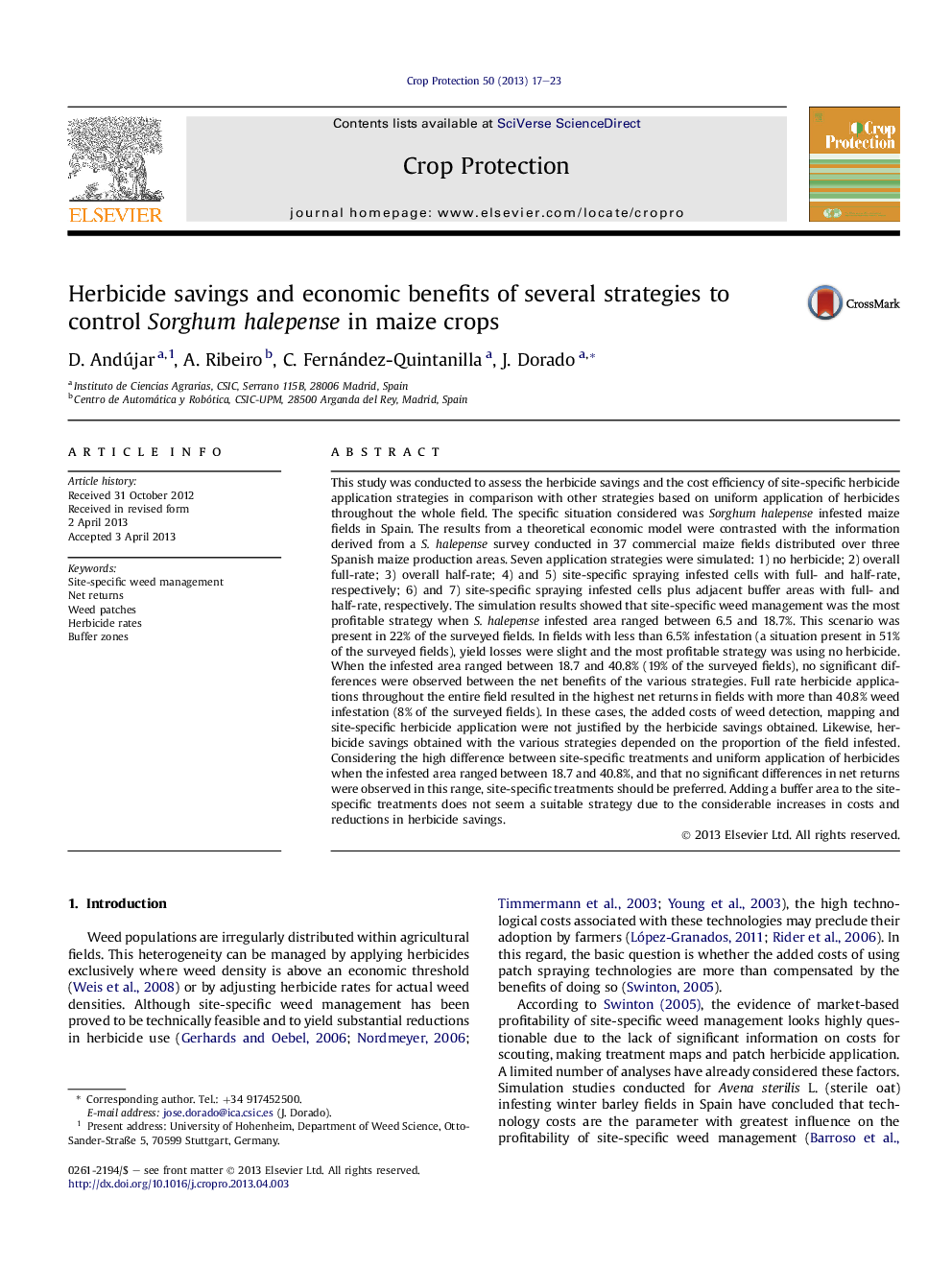| Article ID | Journal | Published Year | Pages | File Type |
|---|---|---|---|---|
| 4505974 | Crop Protection | 2013 | 7 Pages |
•Sorghum halepense tends to grow in compact patches which are easy to detect.•The most suitable control strategy depends on the percentage of weed-infested area.•No herbicide application is the most profitable strategy in low infested fields.•Patch spraying is the most cost-effective in mildly infested field.•Herbicide application in the whole field is advisable in heavily infested field.
This study was conducted to assess the herbicide savings and the cost efficiency of site-specific herbicide application strategies in comparison with other strategies based on uniform application of herbicides throughout the whole field. The specific situation considered was Sorghum halepense infested maize fields in Spain. The results from a theoretical economic model were contrasted with the information derived from a S. halepense survey conducted in 37 commercial maize fields distributed over three Spanish maize production areas. Seven application strategies were simulated: 1) no herbicide; 2) overall full-rate; 3) overall half-rate; 4) and 5) site-specific spraying infested cells with full- and half-rate, respectively; 6) and 7) site-specific spraying infested cells plus adjacent buffer areas with full- and half-rate, respectively. The simulation results showed that site-specific weed management was the most profitable strategy when S. halepense infested area ranged between 6.5 and 18.7%. This scenario was present in 22% of the surveyed fields. In fields with less than 6.5% infestation (a situation present in 51% of the surveyed fields), yield losses were slight and the most profitable strategy was using no herbicide. When the infested area ranged between 18.7 and 40.8% (19% of the surveyed fields), no significant differences were observed between the net benefits of the various strategies. Full rate herbicide applications throughout the entire field resulted in the highest net returns in fields with more than 40.8% weed infestation (8% of the surveyed fields). In these cases, the added costs of weed detection, mapping and site-specific herbicide application were not justified by the herbicide savings obtained. Likewise, herbicide savings obtained with the various strategies depended on the proportion of the field infested. Considering the high difference between site-specific treatments and uniform application of herbicides when the infested area ranged between 18.7 and 40.8%, and that no significant differences in net returns were observed in this range, site-specific treatments should be preferred. Adding a buffer area to the site-specific treatments does not seem a suitable strategy due to the considerable increases in costs and reductions in herbicide savings.
